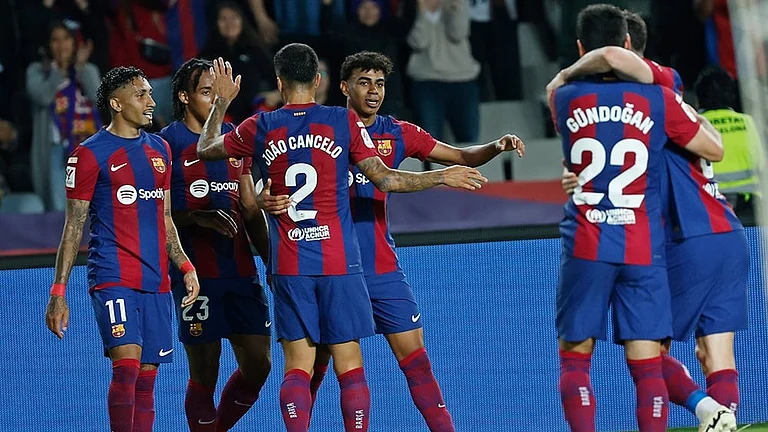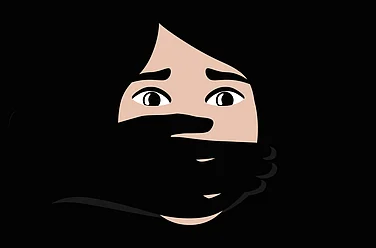The women’s rights movement in India has had many strands and lived several lives. The most vibrant and audacious strand is perhaps represented by the Dalit women of India who have fought a parallel struggle for equality both alongside the national feminist movement and within it. Following the teachings of Savitribhai Phule which came as a boon for the education of Dalit girls initially, the historically subjugated and oppressed women of Dalit communities started absorbing the works of Phule, Periyar and eventually Babasaheb Ambedkar, who was the first to link caste oppression with gender.
In the 70s and 80s, the women’s movement in India was largely driven by upper-caste women. These university-educated women from upper-middle-class families were the galvanising force of the movement. This was also the same time when women from historically marginalised communities were becoming part of the larger movement. By the end of the 70s, Dalit women started to realise that their realities were not being reflected in the larger women’s movement narrative. In the post-independence era, Babasaheb was the only first one to mobilise Dalit women as a constituency and for the first time, they were able to build a vision of how they wanted their own emancipation.
“I started writing short stories in 1975-76. I wrote about my experiences as a woman. The subjugation of gender, issues like wanting male children, marital abuse and dowry. It was only after I read about Babasaheb Ambekar’s views on women’s role in the caste system, endogamy and exogamy that my perspective underwent a sea change. I realised that within the feminist argument, I am not just a woman. I am a Dalit woman,” says Marathi author Urmila Pawar, a long- term member of both the feminist and Dalit feminist movements in India.
Pawar was part of the first generation of educated Dalit women who organised and mobilised themselves as a group in the literary sphere against caste-based gender oppression. “I began writing about my own experiences of discrimination which I had normalised as a part of our caste till then. I wrote about the Dalit women I knew, including my mother and sister. The idea was to show that for Dalit women, the experience of oppression is compounded due to caste marginalisation”.
In 1972, the Dalit Panther movement emerged on the country’s political and cultural scene. At that time, Pawar became friends with renowned Marathi Dalit women poets and writers like Hira Bansode in Mumbai, Kumud Pawre in Nagpur and Jyoti Lanjewal, among others. She and her comrades went on to set up several key organisations like the Dalit Woman’s Organisation and the Samvadini Dalit Stree Sahitya Manch.
“The Panthers were focused on protesting on the streets. But we concentrated more on upholding the movement from an ideological perspective through articles, poems, short stories and art. We became kind of like the cultural wing of the Panthers, expressing the struggle of caste through our writings,” Pawar says.
This distinction of the ‘difference’ of Dalit women, noted by Gopal Guru in his paper titled ‘Dalit Women Talk Differently’ and later propounded by Sharmila Rege, marked that era. The experience of patriarchy, which is universal, is not the same across women belonging to different communities. The writings of Pawar and others offer a cogent critique of feminist and Dalit politics and in the late 80s and 90s, the question of difference started coming to the fore in the organisational space.
By the 80s, pioneer Dalit feminists like Ruth Manorama and anti-caste scholars like Gail Omvedt further questioned the idea of a ‘universal’ feminist movement. Omvedt raised the question of marginal, Dalit peasant women in the 70s and 80s while Manorama was the first to talk of triple discrimination based on class, caste and gender for Dalit women since the 90s, leading to a different organised space for movements of Dalit women, says Priyanka Samy, a member of National Federation of Dalit Women (NFDW).
A second-generation feminist, Samy recalls a ‘critical discussion’ between feminists and comrades Kamla Bhasin and Ruth Manorama during a feminist gathering. Bhasin said, “We [all women] are one” to which Ruth stood up and responded, “No, we are not.” Bhasin told Ruth that she (Manorama) was dividing the movement by saying that, to which Manorama responded, “We are already divided on the basis of caste. I’m only centrestaging our lived realisites.” During the Autonomous Women’s Conference at Tirupati in the early 90s, Dalit women really foregrounded the issue of caste within the feminist movement. This was a moment in history when Dalit women started articulating the fact that women are not a homogenous group, Samy states.
While the voice of Dalit women has grown stronger and there is increased articulation of intersectionality, Samy and younger Dalit feminists feel that the Dalit women’s group continues to live in the shadow of mainstream feminism which is dominated by upper-caste, upper-class women. ‘Intersectionality’ might be a cool word in today’s feminist circles but the women’s rights movement, be it autonomous or political or rights-based, has been largely dominated and controlled by upper-caste women. According to intersectional women’s rights activist and author Shalin Maria Lawrence, most upper-caste feminists suffer selective blindness when it comes to the double or triple marginalisation of Dalit women.
She uses the example of the feminist movement in support of legalising sex work. “I agree that women should have the right to choose. But what about Dalit girls pushed into forced sexual work or bonded labour due to their caste? They don’t have any choice,” Lawrence says. Shalin adds that Dalit women face a lot of vitriol on social media as well for speaking about caste, gender and/or politics. “I feel that Dalit men are not abused as much when they talk about these things on Twitter.”
Sabari G. Rajan, President of Ambedkar Students’ Union, Hyderabad, agrees that marginalised women continue to be denied space in politics and social mobilisation movements and that their issues, especially the question of sexuality and sexual violence is not at all inclusive of Dalit voices. “Every day, Dalit and Adivasi women and girls are raped and killed in many parts of India. Most of the time, the mainstream media fails to cover them,” she says.
Even when it does, a case like Hathras where a nineteen-year-old Dalit woman was allegedly gang-raped by four upper-caste men, is often passed off as gender violence. But sexual violence by upper-caste men against so-called lower-caste women is not just gender violence. It has a centuries-long history of caste oppression in a nation that views the sexual safety of women as a matter of familial honour (read caste pride).
Rajan points out that there are many strong, independent Dalit women leaders but not many reach the stature of someone like Mayawati, the only Dalit woman to become chief minister in India. “Most Dalit, Adivasi women are not in the forefront of movements and politics because they needed or wanted to contribute to the survival of their families. Unlike Savarna women, the privilege of being on the ground is not always accessible to them. But even by rearing their own children, Dalit women are contributing to nation-building, which I consider a political act.”
At present, women across the autonomous, organisational, political and literary spectrum of Dalit feminist movements agree that the current dispensation has made things difficult for civil society movements, be it through the curtailing of funds for rights-based organisations or the political persecution of dissenters. How the Dalit women’s movement—with its existing ideological pulls between Ambekarite and Marxist and Gandhian ideologies—responds to the rising wave of Hindutva politics will have a significant impact on the feminist discourse of the nation.
(This appeared in the print as 'Beyond Feminism')


























